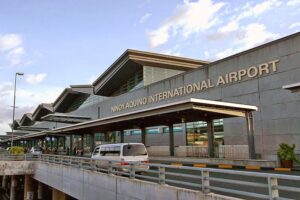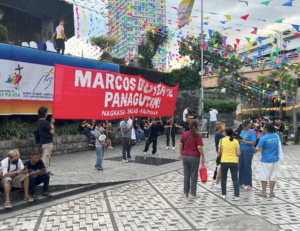Iligan, long a key player in the nation’s history and development, is ready for a new chapter. With the right vision and effective leadership, the city could reignite its economic engine and restore its former influence.
By Prince Eduard Ragasa
The City of Iligan, located between Northern and Central Mindanao and the Bangsamoro region, is home to some 300,000 residents — Christians, Muslims, and indigenous peoples who have coexisted harmoniously for generations. Rich in historical significance, Iligan’s past is intertwined with major milestones in Philippine history, from the era of pre-colonial sea dwellers to the contemporary period marked by industrial growth and political prominence.
Historically, Iligan has been a site of considerable development. The former National Steel Corporation, which drove the city’s economic growth in the latter half of the 20th century, was the site of what was once Camp Overton, a strategic base during the American military occupation decades before. Additionally, the creation of the National Power Corporation under Commonwealth Act No. 120, signed by President Manuel Quezon, enabled the harnessing of the hydroelectric potential of the Lake Lanao-Agus River system, which remains vital to the country’s electricity supply.
Iligan also boasts significant political heritage, notable for figures like Tomas Cabili, a World War II hero who served as an assemblyperson, senator, and national defense secretary before meeting a tragic end alongside President Ramon Magsaysay in the plane crash at Mount Manunggal, Cebu. The ancestral home in the city of First Lady Eva Macaraeg-Macapagal — wife and mother of presidents nos. 9 Diosdado and 14 Gloria Arroyo — proudly displays the memorabilia from its distinguished former residents.
Despite its historical and cultural richness, Iligan faces ongoing challenges. The city’s economic vibrancy suffered since the Asian financial crisis of the late 1990s, and while there have been efforts to revive its local economy, significant hurdles remain. The city is known for its natural beauty, particularly its waterfalls, earning it the nickname “City of Majestic Waterfalls.” New attractions like the Sikyop Agri-Tourism Adventure and the weekend night market at the City Public Plaza reflect attempts to stimulate local spending and attract tourists.
However, Iligan’s progress has been uneven. The city’s infrastructure remains largely underdeveloped, and there is a pressing need to preserve the remaining historical sites while revitalizing its underutilized lands and urban spaces. To move forward, Iligan must leverage its natural assets and rich heritage while addressing infrastructure deficits and enhancing public amenities.
The path to revitalization requires a strategic approach. For instance, transforming the historic Downtown Iligan into a vibrant, pedestrian-friendly, and sustainable urban hub will not only spur economic growth in the old city center but also improve the quality of life for Iliganons. With the steady influx of students — thanks to leading educational institutions in the city such as the Mindanao State University-Iligan Institute of Technology — as well as uniformed personnel, shoppers, and tourists, the city stands to gain significantly from a state-of-the-art intermodal hub that seamlessly connects sea, land, and air travel. This development will elevate Iligan’s status as a regional transportation nexus and set a pioneering transit solution in the country.
Finally, rehabilitating the old Benjamin B. Andrada Building and surrounding land into the Iligan Heritage House museum complex will forge a tangible connection to the city’s past and foster local pride. Imagine tartanilla carriages bringing in the museum visitors, wearing Filipiniana dresses and Barong Tagalogs rented from the nearby tailor shops, enjoying the expansive green space, and savoring street food delights from the stalls along the nearby school. The demolition of the Laya Ancestral House serves as a stark reminder of the urgent need to preserve Iligan’s remaining heritage sites for future generations.
Now is the perfect time to pursue these initiatives, as they align with the current priorities of the national government. There are abundant examples of public-private cooperation to learn from across the country. As in the past, what is needed is a cohesive, forward-looking roadmap backed by political will, smart planning, and active community engagement.
Iliganons find themselves once more at a pivotal moment in their rich and storied history. With unified and dedicated effort, the city can overcome the current challenges and harness its historical, cultural, and natural heritage to unlock the city’s full potential as a vibrant, competitive, and culturally rich urban center in the country. (Photo courtesy of Iligan City Tourism Office)
***
Prince Eduard Ragasa is a film and TV producer focused on foreign projects filmed in the country. Growing up in Iligan City, he has nurtured a passion for transport and urban planning and design, driven by a deep-seated interest in his hometown.











